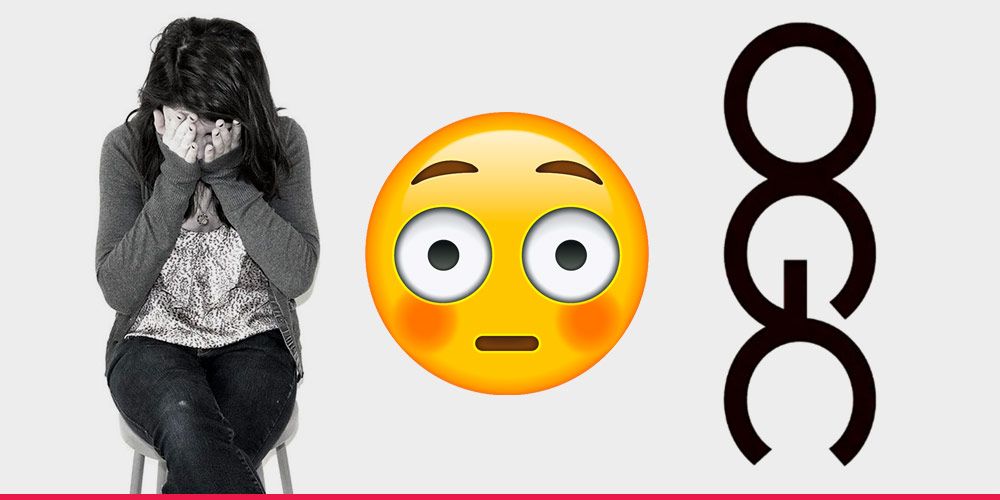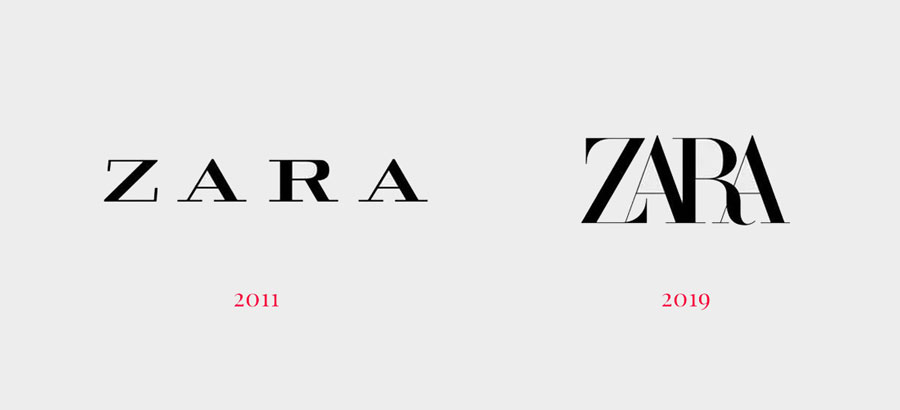Brand Identity Fails: 5 Mistakes to Avoid (+ How to Fix Them)

Someone once said that marketing is like asking someone out on a date. Branding is the reason they say yes! If you want to win the heart of your consumers, it’s crucial to get your brand right. The three pillars of branding are identity, promise, and signaling, all of which are equally important. Rather than three sides of a triangle, however, they are more like the RGB components of a color. They blend into each other.
Some companies rely more on their brand promise, like Toyota which promises a great vehicle that can outlast its owner at a reasonable price. But you can’t tell it apart from Hyundai the same way you can differentiate a Mercedes from a BMW. Other companies like Versace or Supreme rely on their signaling strategy. You buy these brands because they tell the world something about you. They don’t focus much on their design, they focus on what the design says about the person who’s wearing it. Just like a particular color can have more blue and red then green, a brand can be built on any combination of the three components.
But what we need to understand is that while these three components are equally important, if not equally present, Identity always comes first. That’s because you can develop a strong brand identity without a solid promise or signaling strategy. But it doesn’t work the other way around. What’s the point of being known as the best in your industry if people can’t tell you apart from your competition. If you mess up brand identity, everything else you do is for nothing. Therefore, let’s all make sure that we think long and hard about it. We’ve thought of some common mistakes that companies make with their branding:
1. Cheaping out on Design
If you’re serious about your business, you never want your nephew (who we’re sure is plenty talented) making your branding. Get a designer. If you think quality design costs too much, you should consider the cost of bad design. That’s something we designers tell clients to explain the value of our services.
You don’t want to cheap out on design. In the US, it’s possible to hire a decent freelancer to make you a logo for $1k. However, high-quality designs typically cost around $5k. While some people roast designers for these “outlandish prices”, it’s important to factor what goes into the design process. When you consider the research, the fine-tuning, and all of the other details, you get what you pay for. Here are two aspects of the design process that take the most time:
Avoiding similarity
Designers need to ensure that no other company in your vicinity or field has a logo that is too similar to yours. Technological advancements will likely provide shortcuts to this within the next few years, but as of now, you’re at the mercy of your designer or agency.


We know many people who confuse Bentley and Chrysler, an example of why logos should also be tested. It’s not about what you or your wife think. It’s about how your customer sees your brand.
“Design is the silent ambassador of your brand.” \ Paul Rand
Compliance
The brainstorming process for logos can quickly get out of hand. We need to ensure that your great idea for a logo can meet a variety of applications, from your website’s Favicon to the front of a billboard. Other considerations include testing for color blindness and researching the shape and verbiage to confirm that it isn’t suggestive or inappropriate in other cultures. Those don’t even include the more technical design details such as grids and scaling. When a designer performs these tasks properly, you don’t even notice the difference.

MegaFlick & OGC: Office of Government Commerce: If you think it’s fine, turn your head sideways
2. Going after Fashion
Your brand identity is not a fashion statement. Even if you’re a fashion brand. Good logos are timeless. Think Nike, Apple, BBC, Ford, Chanel. The render can be updated for sure, but the kernel has to stand the test of time. Like a pair of Jordans, a good logo and your brand’s visual design accrue value over time. Not only due to brand recognition, but because they demonstrate consistency and serve as a great reminder of pedigree and heritage.
Amancio Ortega, the founder of the Zara clothing brand, is credited for creating what is now called “fast fashion” in the early 90s. He built his empire around moving through fashion trends as fast and efficiently as possible. He foresaw that technological advancements, especially in communication, would drive consumers to cycle through trends faster. He was right, and he has 67.8 billion USD (2019) to prove it.
People will fall in love with your new branding today because it’s on-trend and vogue. But perhaps a few months or even weeks from now, those same people who adored you will abandon you because you’re yesterday’s news. Most of us aren’t Amancio Ortega so it’s best to avoid becoming a fast-fashion brand. Although even Zara went through a recent rebranding, which reinforces the concept of keeping the kernel and changing the render.

3. Misalignment with the mission
Visual design is about transforming ideas into graphic vessels. While most people without a design degree don’t have the language to define great design, consumers can perceive it on a subconscious level. Visual elements such as lines, colors, and photography can influence our buying decisions, our loyalty, and our reception of new products and services. But how can that cause trouble?
Brands create mission statements to define their company’s purpose, and craft vision statements to outline their plans for their future. These two components are essential for brand identity and authenticity, which is why they shouldn’t change. The mistake many business owners make is modeling their branding after their product or service.
Companies pivot all the time. In the late 90s, Netflix used to rent DVDs. They only began their streaming service in the mid-2000s. The original plan was for Netflix to be a box that downloaded movies overnight. Imagine if they had that on their logo the same way they had a VHS tape on their original one in 1998. That would have been a mistake.

If you’re a fast-food restaurant that sells hot dogs, you don’t have to have a hot dog featured in your branding. You might one day see an opportunity to offer other food specialties. Brand for your mission of serving food in a convenient manner, not the dish itself. Brand for the what, not the how.
Interested in learning how to turn your mission and vision into a compelling brand story? Read our article about how to write a brand story that excites your customers.
4. Not thinking of scale
Your branding should have as much room for scale as possible. That’s why a golden rule of logo design is simplicity. Simplicity sets you up for success at scale. A great example of this is Slack’s recent rebranding.
We all loved the old Slack logo right? Unfortunately, while the logos looked great as icons on Retina displays, they didn’t look as great everywhere else.

The old logos weren’t versatile; you couldn’t embroider them on company merchandise or create offset prints. Logos are not art. They are design. They are tools — similar to a screwdriver or mouse. They serve a purpose, and in the hands of the right designer or firm, purpose and aesthetics don’t contradict.
5. Thinking of identity only in visual terms
No, identity is not only visual. There are aspects to brand identity that have nothing to do with graphic design. In today’s world, we no longer look for people to buy our product, as Seth Godin tirelessly points out. We look to create products for our people. Technology has made it so that nearly any team with the will and intelligence can bring a product to life. Because the barrier to entry is so low and brand fidelity is hard to maintain, this puts pressure on us to think more about building identity into the product, not skinning it after it’s out of the factory.
Related (and awesome) read: What’s the difference between brand, branding, and brand Identity? An Insider’s Guide.
This sounds great, but how does it translate to reality? It’s not that complicated when you think outside the box. Rather than make the world’s first Green lipstick like the guys at Thelipbar did, you can introduce the world’s only vegan lipstick bar, which is what they’re pitching now. If you’ve watched them on Shark Tank, you’ll know that although they had a visual hook, which was the outrageous lipstick shades, they couldn’t catch the investors’ attention. It’s because they failed to create a product that was in high demand. Now they focus only on the vegan aspect of their business, which is how they got into Target.
Your identity doesn’t have to be only visual. It can also focus on who your product or service is for, why you’re making it, or the people behind your company. Brand identity is what comes after: “Yeah, I know those people, they are the guys that ___insert brand identity here___”. If you want to make it visual, like the green coffee shop, the red supercar, or the yellow furniture store, then commit. But know that there are other ways to go about creating a strong brand identity.
If this isn’t enough to convince you of the importance of brand identity, you can always consider the cost of a rebrand. If you get your brand identity wrong, rebrandings are expensive and risky endeavors. On the other hand, if you nail your brand identity, you will always feel comfortable investing in a new batch of business cards from your friends at Brandly. And that’s something to strive for. You should feel confident in your brand.
If you’re interested in learning more about Brandly’s free business card ordering portals and how it can help your large company manage, edit, and order business cards you should check out our website.
Set Up Your Free Business Card Portal
Get Started
